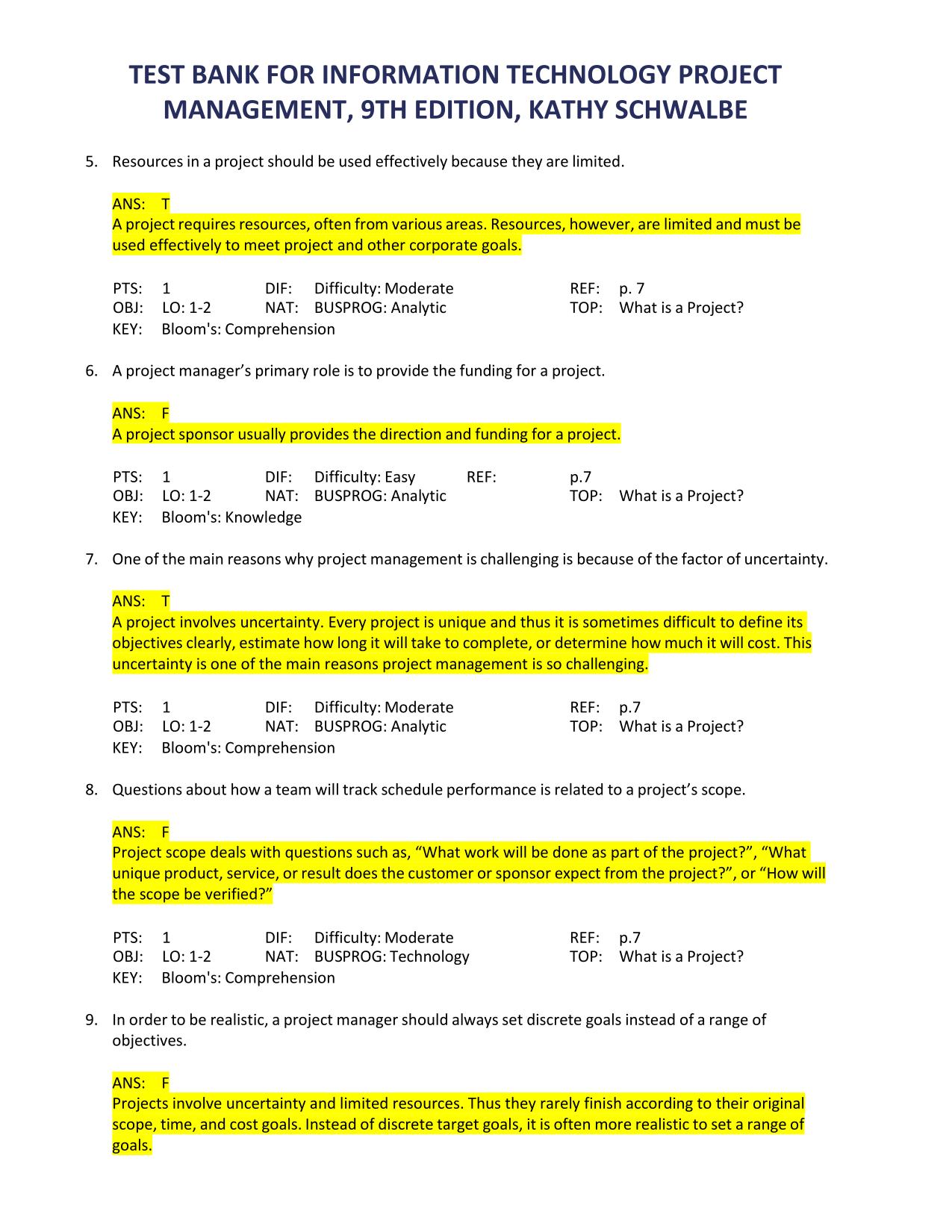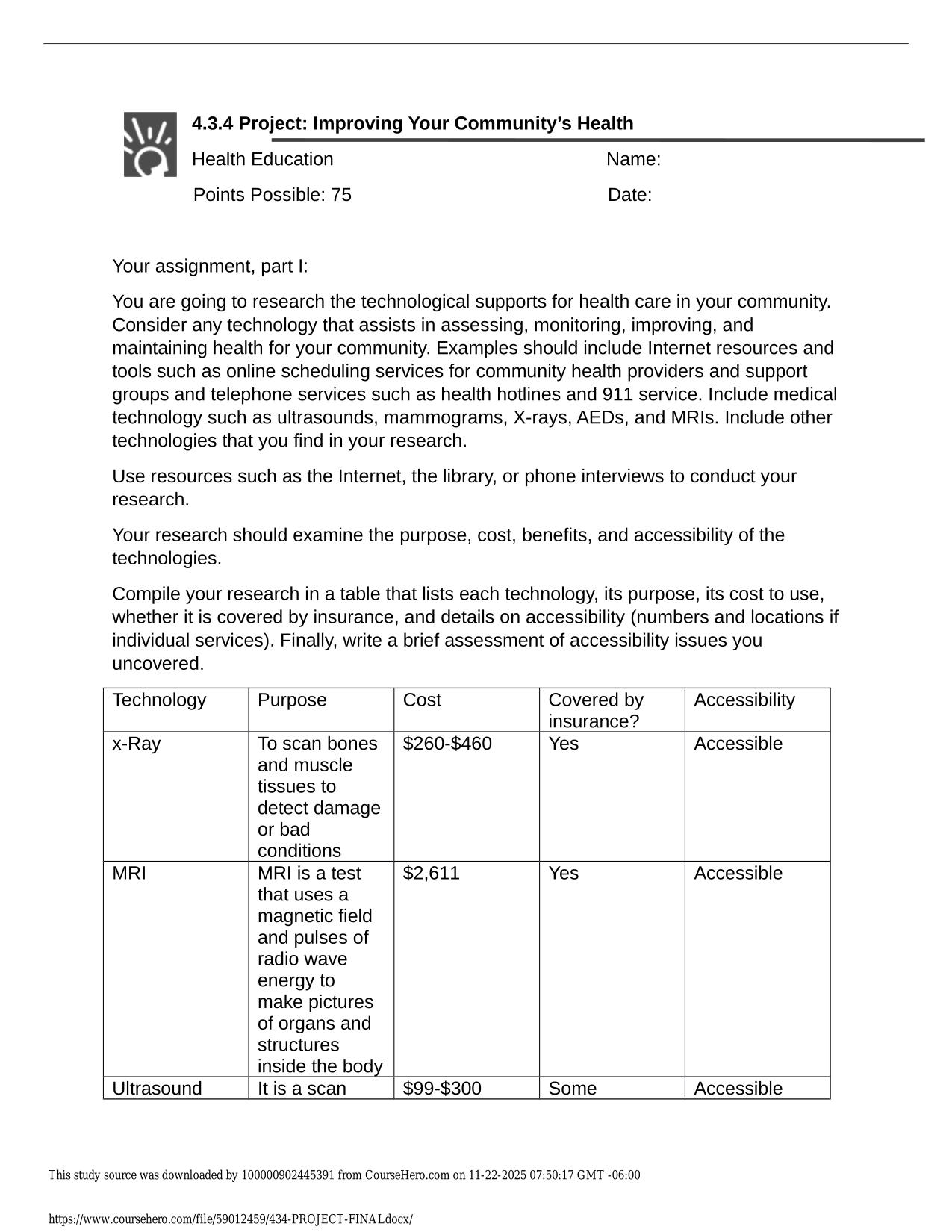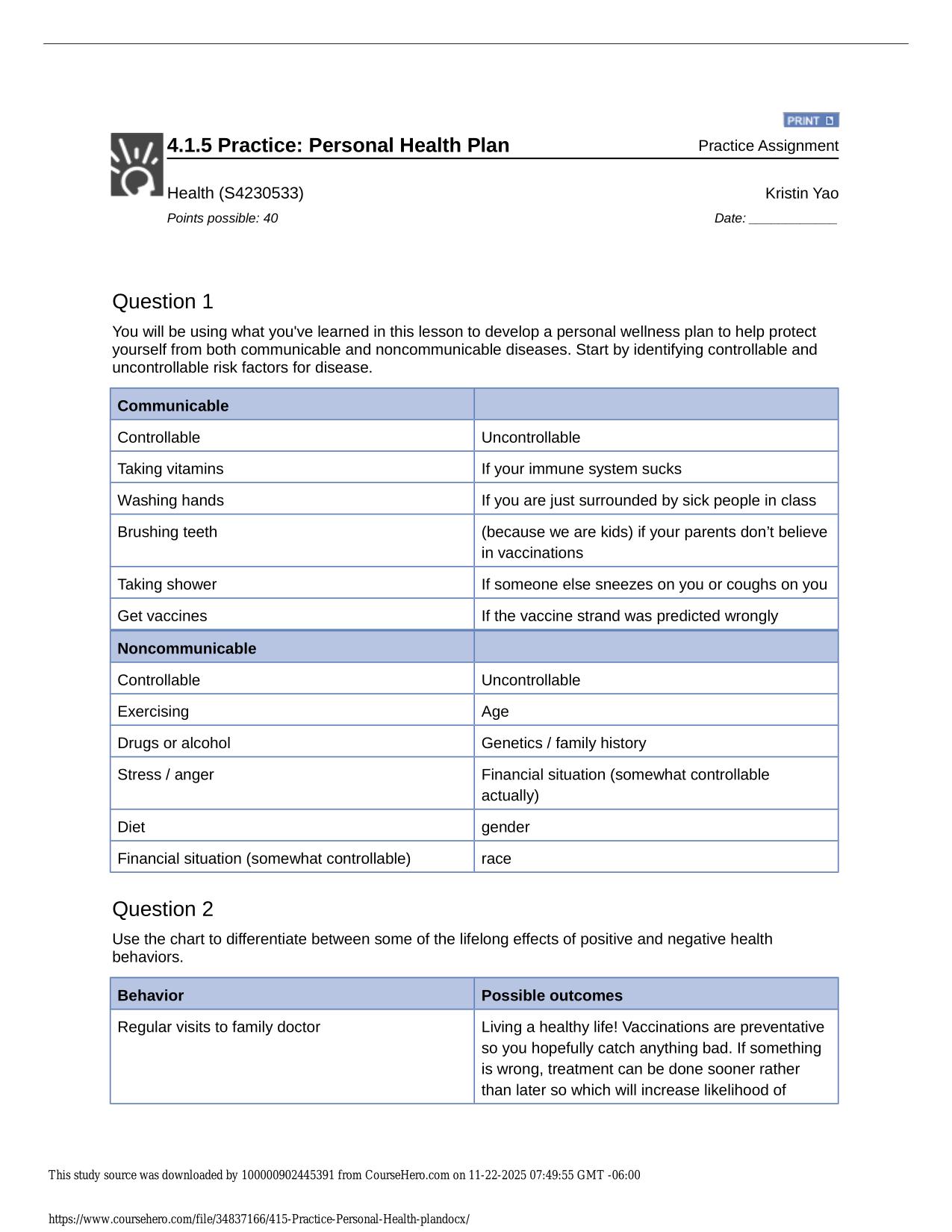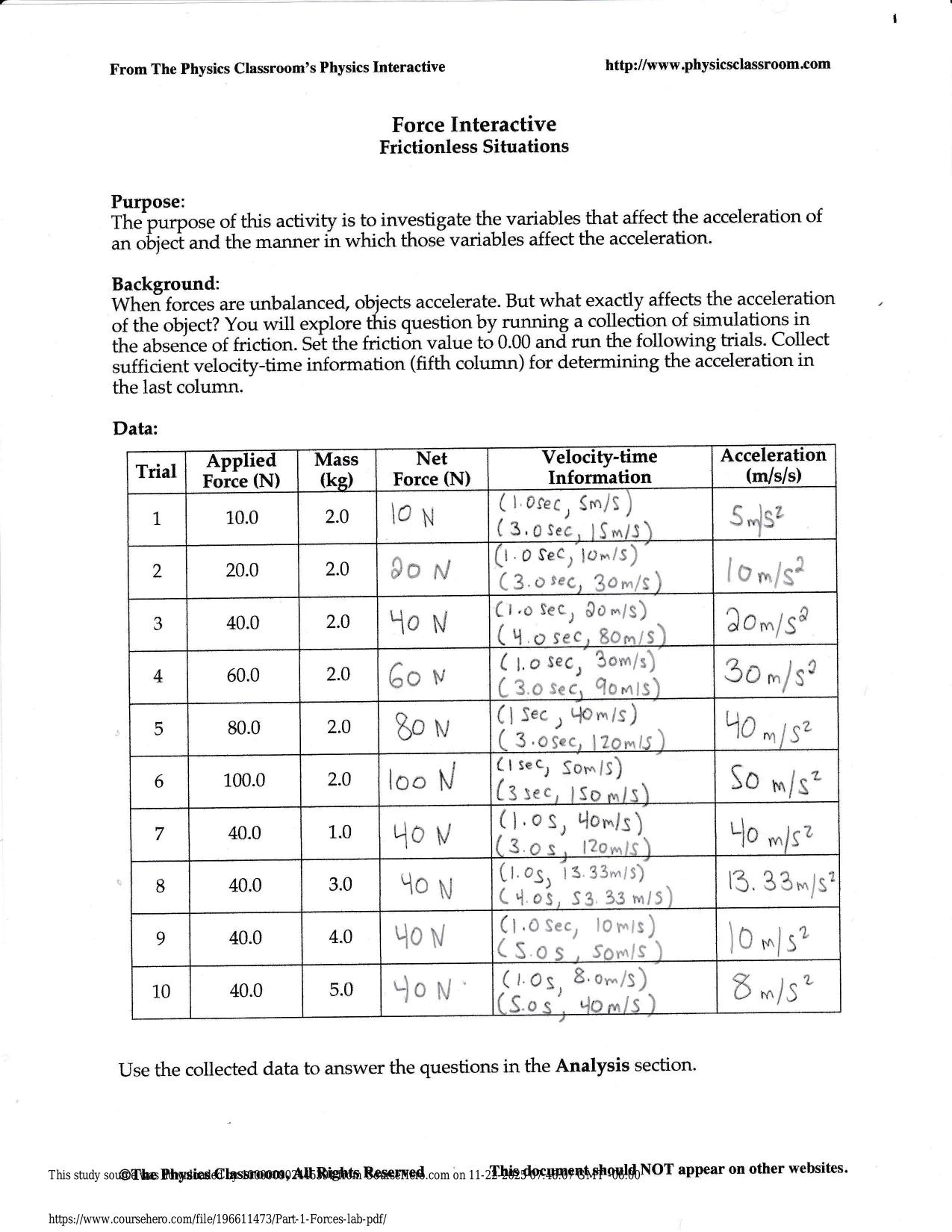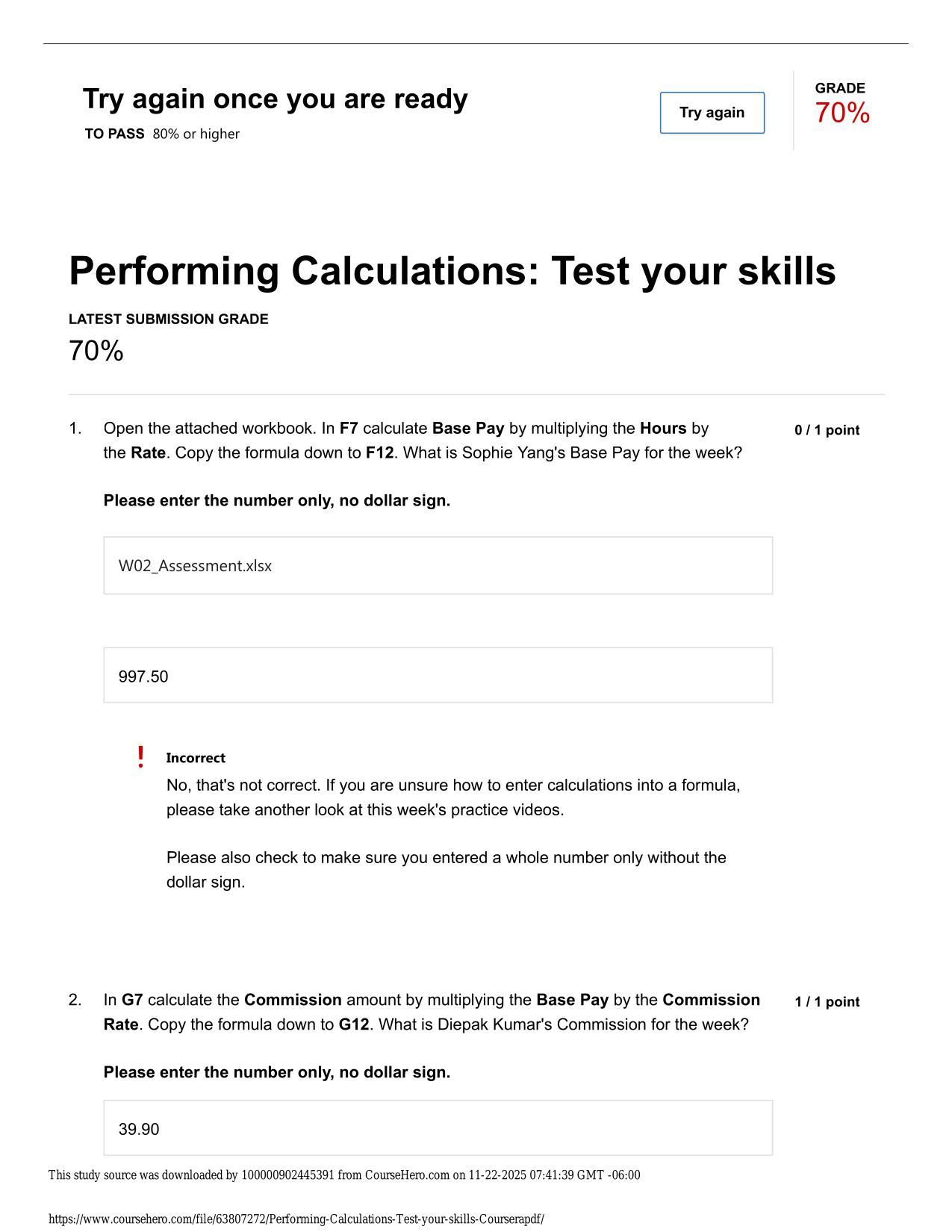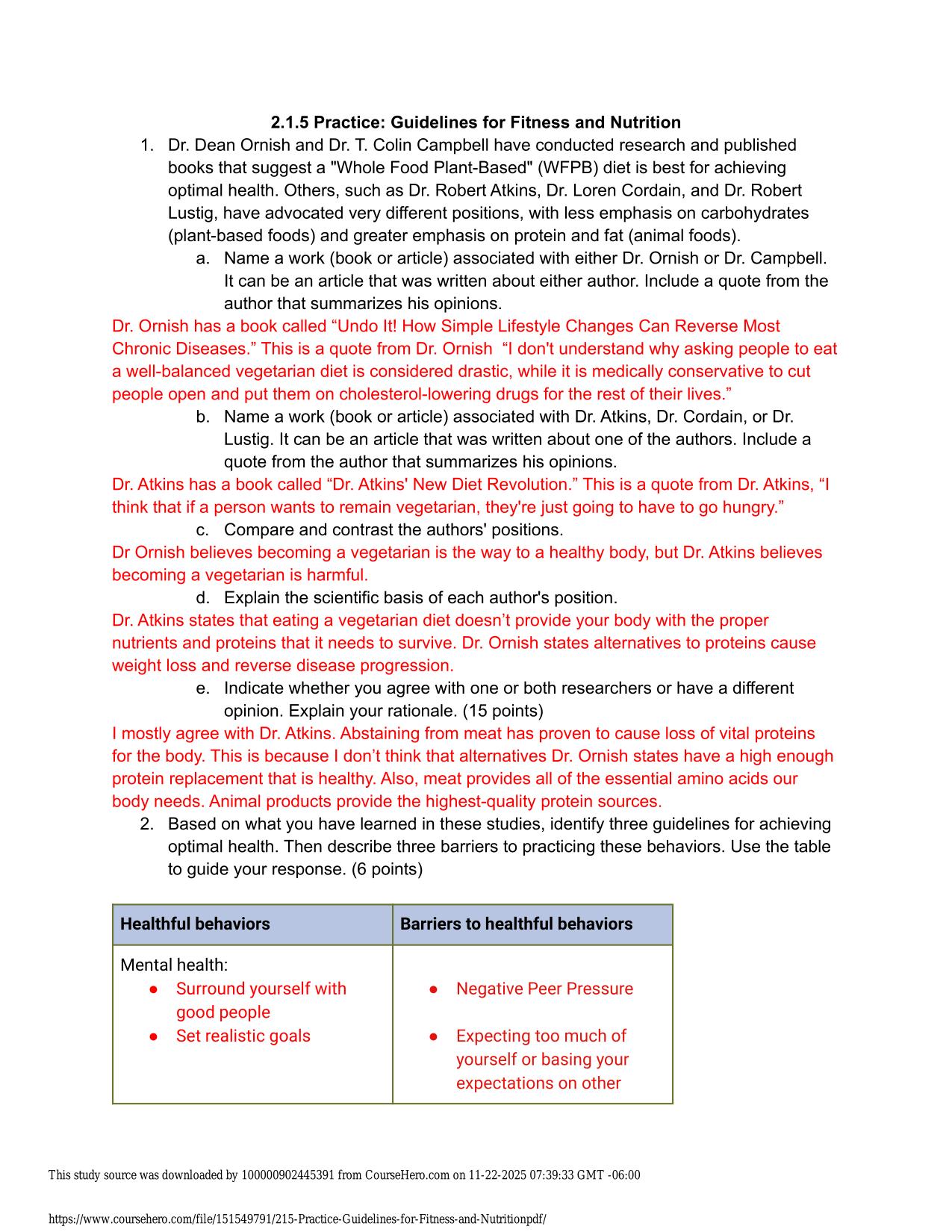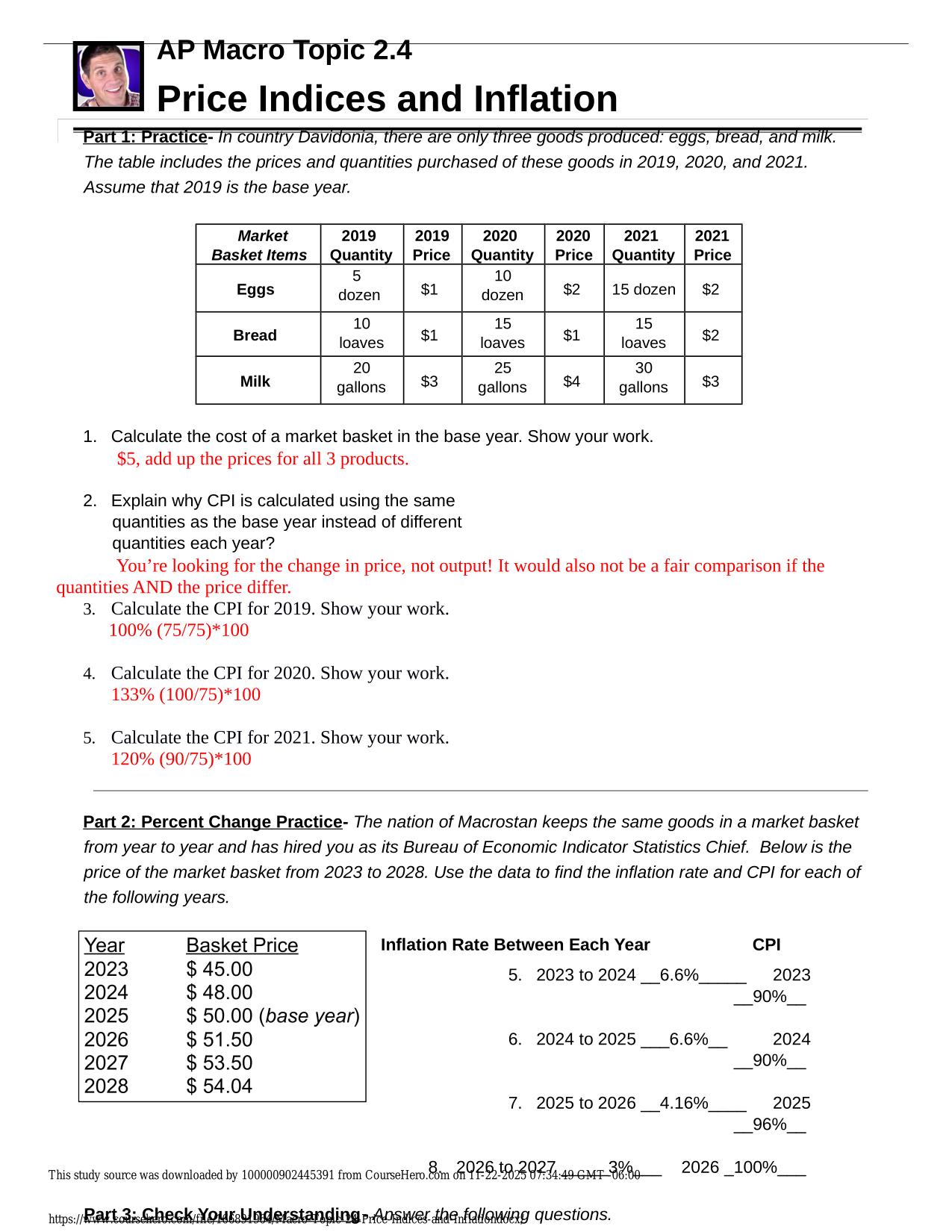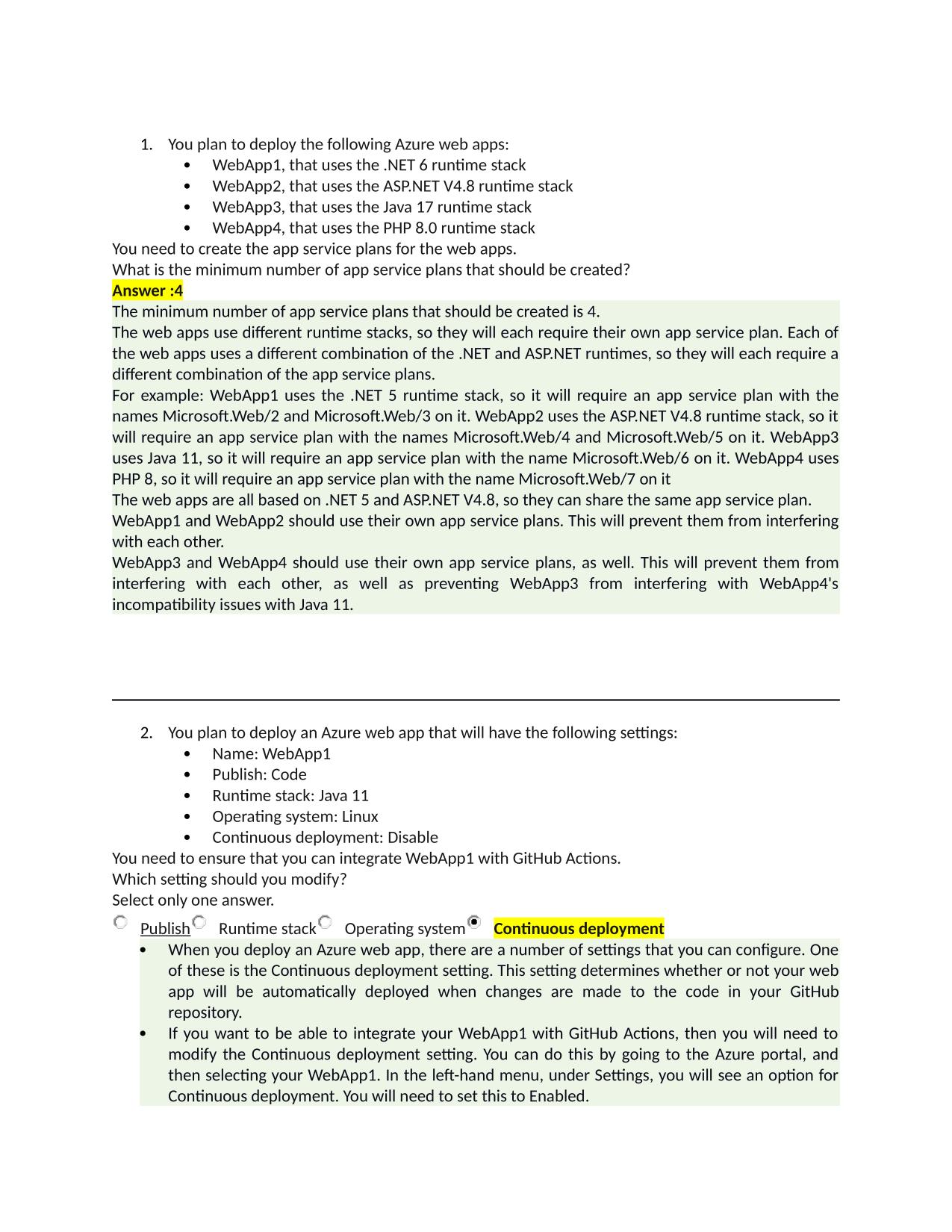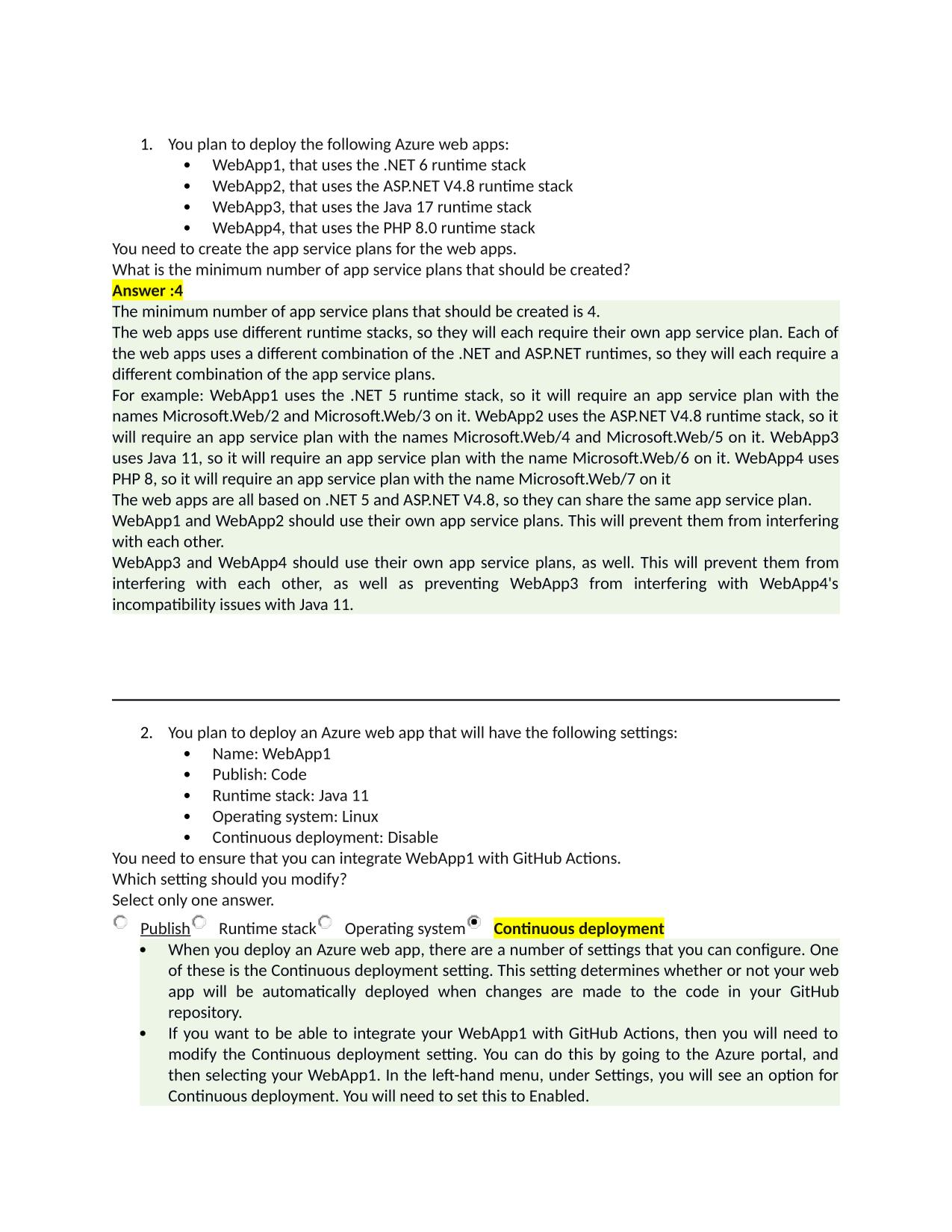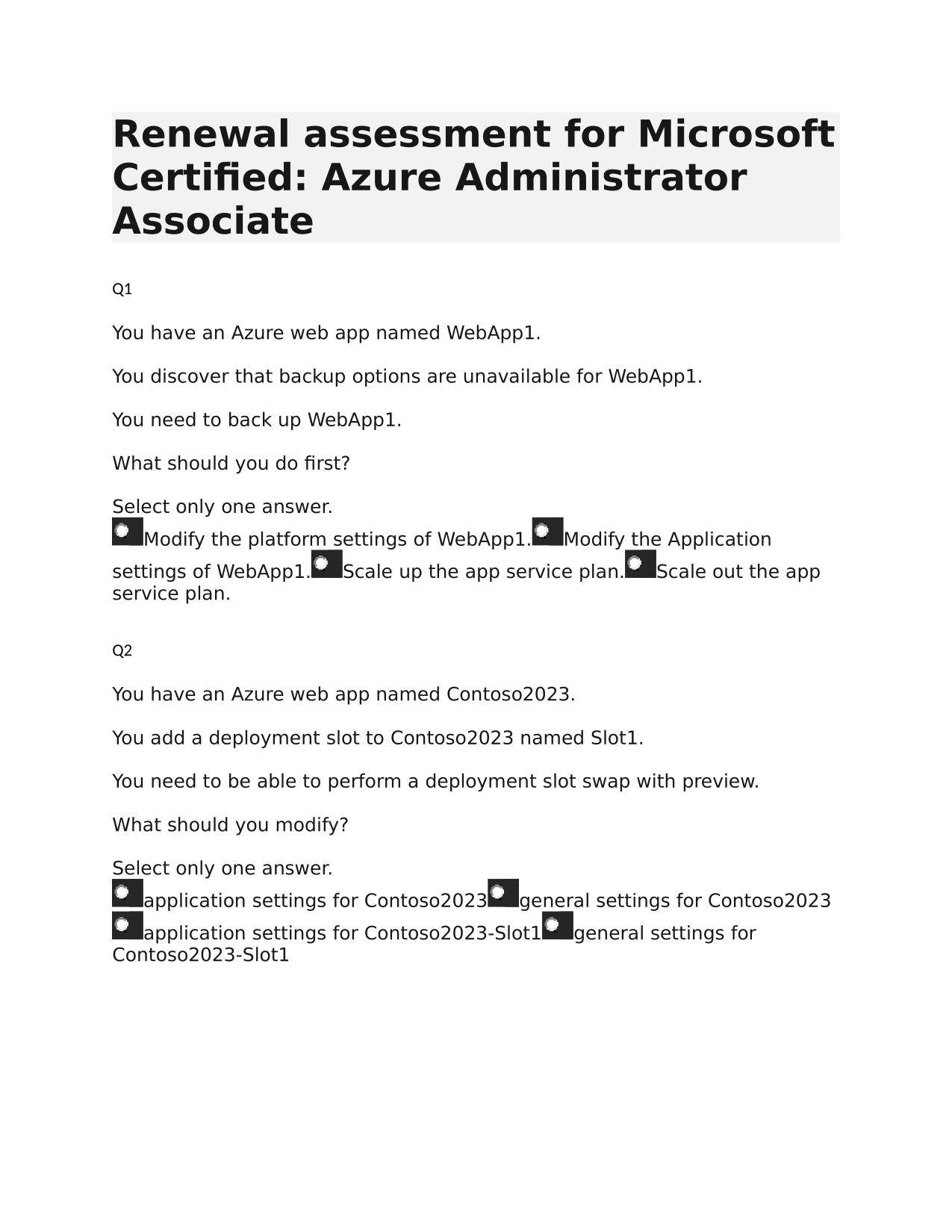TEST BANK FOR INFORMATION TECHNOLOGY PROJECT MANAGEMENT 9TH ED KATHY SCHWALBE ISBN-9781337101356
Course:
INFORMATION TECHNOLOGY
Institution:
INFORMATION TECHNOLOGY
TEST BANK FOR INFORMATION TECHNOLOGY PROJECT MANAGEMENT 9TH ED KATHY SCHWALBE ISBN-9781337101356 TRUE/FALSE 1. Until the 1980s, project management primarily focused on providing schedule and resource data to top management in the military, computer, ...
After purchase, you get:
✅ Instant PDF Download
✅ Verified answer explanations
✅ Refund if not Satisfied
✅ Prepared for 2025/2026 test cycle
Overview
This resource reinforces high-yield topics that dominate modern INFORMATION TECHNOLOGY testing frameworks. You're always working on content that has the biggest impact on your final score. This strategic focus is perfect for effective preparation when time is limited. Students love knowing they're not wasting effort on obscure topics that rarely appear on actual exams.
Who Is This For?
Created for exam takers seeking maximum exposure to typical Testbank questions, rationales, and scenarios. People often use it to test their readiness before the actual exam. The complete coverage ensures thorough preparation.
Related Keywords
Detailed Study Description
Frequently Asked Questions
Document Information
| Uploaded on: | November 1, 2025 |
| Last updated: | November 17, 2025 |
| Number of pages: | 320 |
| Written in: | 2025/2026 |
| Type: | Exam (elaborations) |
| Contains: | Questions & Answers |
| Tags: | TEST BANK FOR INFORMATION TECHNOLOGY PROJECT MANAGEMENT 9TH ED KATHY SCHWALBE ISBN-9781337101356 TRUE/FALSE 1. Until the 1980s, project management primarily focused on providing schedule and resource data to top management in the military, computer, and construction industries. ANS: T Until the 1980s, project management primarily focused on providing schedule and resource data to top management in the military, computer, and construction industries. Today’s project management involves much more, and people in every industry and every country manage projects. PTS: 1 DIF: Difficulty: Easy REF: p.2 OBJ: LO: 1-1 NAT: BUSPROG: Technology TOP: Introduction KEY: Bloom's: Knowledge 2. A difference between operations and projects is that operations end when their objectives have been reached, whereas projects do not. ANS: F Projects are different from operations in that they end when their objectives have been reached or the project has been terminated. PTS: 1 DIF: Difficulty: Moderate REF: p.4 OBJ: LO: 1-2 NAT: BUSPROG: Analytic TOP: What is a Project? KEY: Bloom's: Comprehension 3. Every project should have a well-defined objective. ANS: T A project has a unique purpose. Every project should have a well-defined objective. PTS: 1 DIF: Difficulty: Easy REF: p.6 OBJ: LO: 1-2 NAT: BUSPROG: Analytic TOP: What is a Project? KEY: Bloom's: Knowledge 4. Projects should be developed in increments. ANS: T A project is developed using progressive elaboration |
Seller Information

AdelineJean
User Reviews (0)
Exam (Elaborations)
$17.00
Add to Cart
100% satisfaction guarantee
Refund Upon dissatisfaction
Immediately available after purchase
Available in Both online and PDF
$17.00
| 0 sold
Discover More resources
Inside The Document
TEST BANK FOR INFORMATION TECHNOLOGY PROJECT MANAGEMENT, 9TH EDITION, KATHY SCHWALBE Chapter 1: Introduction to Project Management TRUE/FALSE 1. Until the 1980s, project management primarily focused on providing schedule and resource data to top management in the military, computer, and construction industries. ANS: T Until the 1980s, project management primarily focused on providing schedule and resource data to top management in the military, computer, and construction industries. Today’s project management involves much more, and people in every industry and every country manage projects. PTS: OBJ: KEY: 1 DIF: Difficulty: Easy REF: LO: 1-1 NAT: BUSPROG: Technology Bloom's: Knowledge p.2 TOP: Introduction 2. A difference between operations and projects is that operations end when their objectives have been reached, whereas projects do not. ANS: F Projects are different from operations in that they end when their objectives have been reached or the project has been terminated. PTS: OBJ: KEY: 1 DIF: Difficulty: Moderate LO: 1-2 NAT: BUSPROG: Analytic Bloom's: Comprehension REF: p.4 TOP: What is a Project? 3. Every project should have a well-defined objective. ANS: T A project has a unique purpose. Every project should have a well-defined objective. PTS: OBJ: KEY: 1 DIF: Difficulty: Easy LO: 1-2 NAT: BUSPROG: Analytic Bloom's: Knowledge REF: p.6 TOP: What is a Project? 4. Projects should be developed in increments. ANS: T A project is developed using progressive elaboration. Projects are often defined broadly when they begin, and as time passes, the specific details of the project become clearer. Therefore, projects should be developed in increments. PTS: OBJ: KEY: 1 DIF: Difficulty: Moderate LO: 1-2 NAT: BUSPROG: Analytic Bloom's: Comprehension REF: p.6 TOP: What is a Project? TEST BANK FOR INFORMATION TECHNOLOGY PROJECT MANAGEMENT, 9TH EDITION, KATHY SCHWALBE 5. Resources in a project should be used effectively because they are limited. ANS: T A project requires resources, often from various areas. Resources, however, are limited and must be used effectively to meet project and other corporate goals. PTS: OBJ: KEY: 1 DIF: Difficulty: Moderate LO: 1-2 NAT: BUSPROG: Analytic Bloom's: Comprehension REF: p. 7 TOP: What is a Project? 6. A project manager’s primary role is to provide the funding for a project. ANS: F A project sponsor usually provides the direction and funding for a project. PTS: OBJ: KEY: 1 DIF: Difficulty: Easy LO: 1-2 NAT: BUSPROG: Analytic Bloom's: Knowledge REF: p.7 TOP: What is a Project? 7. One of the main reasons why project management is challenging is because of the factor of uncertainty. ANS: T A project involves uncertainty. Every project is unique and thus it is sometimes difficult to define its objectives clearly, estimate how long it will take to complete, or determine how much it will cost. This uncertainty is one of the main reasons project management is so challenging. PTS: OBJ: KEY: 1 DIF: Difficulty: Moderate LO: 1-2 NAT: BUSPROG: Analytic Bloom's: Comprehension REF: p.7 TOP: What is a Project? 8. Questions about how a team will track schedule performance is related to a project’s scope. ANS: F Project scope deals with questions such as, “What work will be done as part of the project?”, “What unique product, service, or result does the customer or sponsor expect from the project?”, or “How will the scope be verified?” PTS: OBJ: KEY: 1 DIF: Difficulty: Moderate LO: 1-2 NAT: BUSPROG: Technology Bloom's: Comprehension REF: p.7 TOP: What is a Project? 9. In order to be realistic, a project manager should always set discrete goals instead of a range of objectives. ANS: F Projects involve uncertainty and limited resources. Thus they rarely finish according to their original scope, time, and cost goals. Instead of discrete target goals, it is often more realistic to set a range of goals. TEST BANK FOR INFORMATION TECHNOLOGY PROJECT MANAGEMENT, 9TH EDITION, KATHY SCHWALBE PTS: OBJ: KEY: 1 DIF: Difficulty: Moderate LO: 1-2 NAT: BUSPROG: Analytic Bloom's: Comprehension REF: p.8 TOP: What is a Project? 10. Managing the triple constraint primarily involves making trade-offs between resources and quality. ANS: F Managing the triple constraint involves making trade-offs between scope, time, and cost goals for a project. Experienced project managers know that one must decide which aspect of the triple constraint is most important. PTS: OBJ: KEY: 1 DIF: Difficulty: Easy LO: 1-2 NAT: BUSPROG: Analytic Bloom's: Knowledge REF: p.9 TOP: What is a Product? 11. The only responsibility of a project manager is to meet the specific scope, time, and cost goals of a project. ANS: F Project managers must strive not only to meet specific scope, time, cost, and quality goals of projects but also facilitate the entire process to meet the needs and expectations of people involved in project activities or affected by them. PTS: 1 DIF: Difficulty: Moderate REF: p.9 OBJ: LO: 1-3 NAT: BUSPROG: Analytic TOP: What is Project Management? KEY: Bloom's: Comprehension 12. A project’s stakeholders consist of its customers, users, and suppliers. ANS: T Stakeholders are the people involved in or affected by project activities, and include the project sponsor, project team, support staff, customers, users, suppliers, and even opponents of a project. PTS: 1 DIF: Difficulty: Moderate REF: p.10 OBJ: LO: 1-3 NAT: BUSPROG: Analytic TOP: What is Project Management? KEY: Bloom's: Comprehension 13. Opponents of a project do not belong to the category of stakeholders. ANS: F Stakeholders are the people involved in or affected by project activities, and include the project sponsor, project team, support staff, customers, users, suppliers, and even opponents of a project. PTS: 1 DIF: Difficulty: Moderate REF: p.10 OBJ: LO: 1-3 NAT: BUSPROG: Analytic TOP: What is Project Management? KEY: Bloom's: Comprehension TEST BANK FOR INFORMATION TECHNOLOGY PROJECT MANAGEMENT, 9TH EDITION, KATHY SCHWALBE 14. The importance of stakeholders’ needs and expectations is limited to the beginning of a project. ANS: F Stakeholders’ needs and expectations are important in the beginning and throughout the life of a project. Successful project managers develop good relationships with project stakeholders to understand and meet their needs and expectations. PTS: 1 DIF: Difficulty: Moderate REF: p.11 OBJ: LO: 1-3 NAT: BUSPROG: Analytic TOP: What is Project Management? KEY: Bloom's: Comprehension 15. Project procurement management primarily involves identifying stakeholder needs while managing their engagement throughout the life of the project. ANS: F Project management knowledge areas describe the key competencies that project managers must develop. Project procurement management involves acquiring or procuring goods and services for a project from outside the performing organization. PTS: 1 DIF: Difficulty: Moderate REF: p.12 OBJ: LO: 1-3 NAT: BUSPROG: Technology TOP: What is Project Management? KEY: Bloom's: Comprehension 16. The primary role of project stakeholder management is to ensure that the project will satisfy the stated needs for which it was undertaken. ANS: F Project management knowledge areas describe the key competencies that project managers must develop. Project stakeholder management includes identifying and analyzing stakeholder needs while managing and controlling their engagement throughout the life of the product. PTS: 1 DIF: Difficulty: Moderate REF: p.12 OBJ: LO: 1-3 NAT: BUSPROG: Technology TOP: What is Project Management? KEY: Bloom's: Comprehension 17. Project human resource management is concerned with making effective use of the people involved with a project. ANS: T Project management knowledge areas describe the key competencies that project managers must develop. Project human resource management is concerned with making effective use of the people involved with the project. PTS: 1 DIF: Difficulty: Moderate REF: p.12 OBJ: LO: 1-3 NAT: BUSPROG: Analytic TOP: What is Project Management? KEY: Bloom's: Comprehension 18. Stakeholder analyses, work requests, and project charters are tools used in integration management.
CourseHero & Studypool Unlocks
Get Unlocked CourseHero and Studypool documents files instantly to your email, simply by pasting your link and clicking "Unlock Now". Learn more on how to unlock here.

